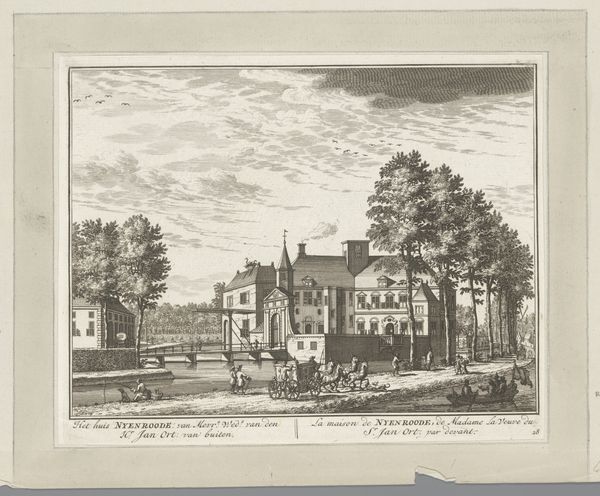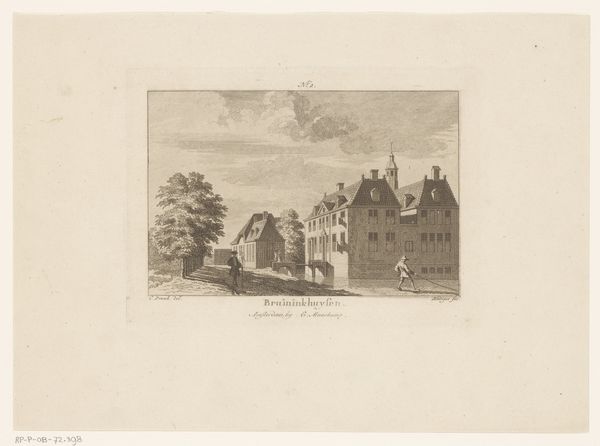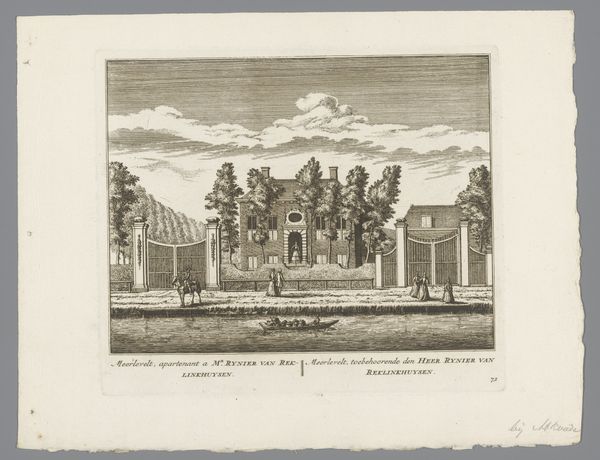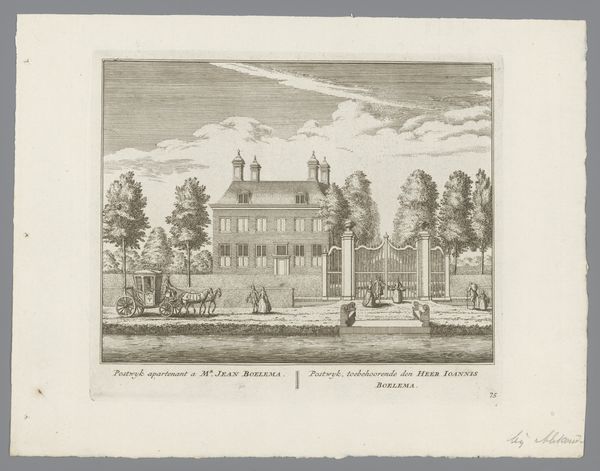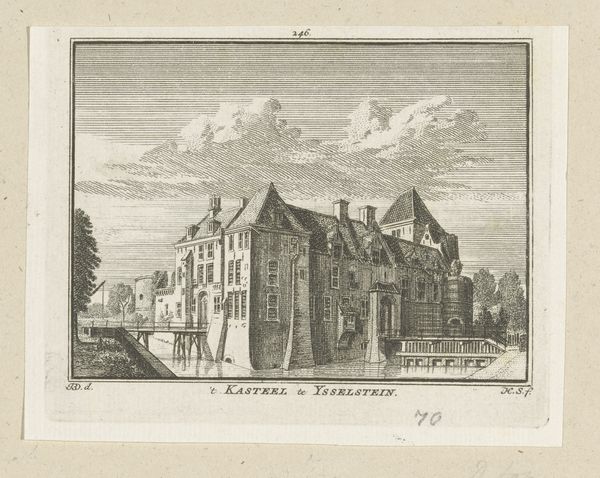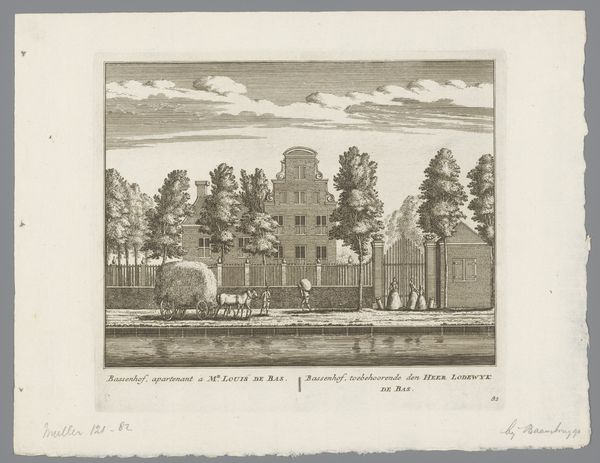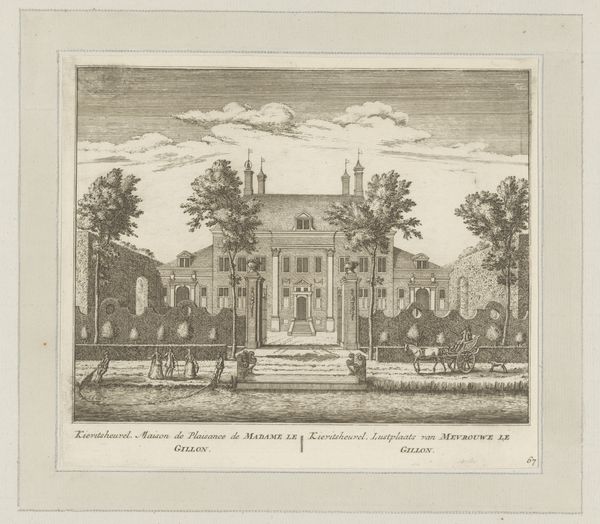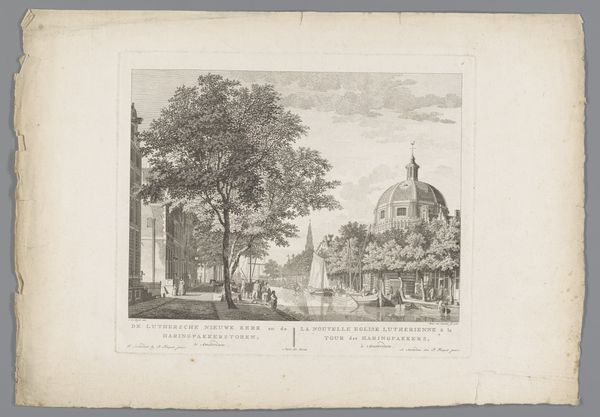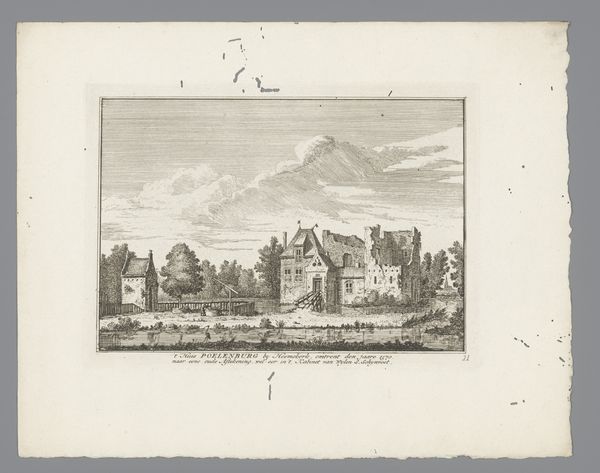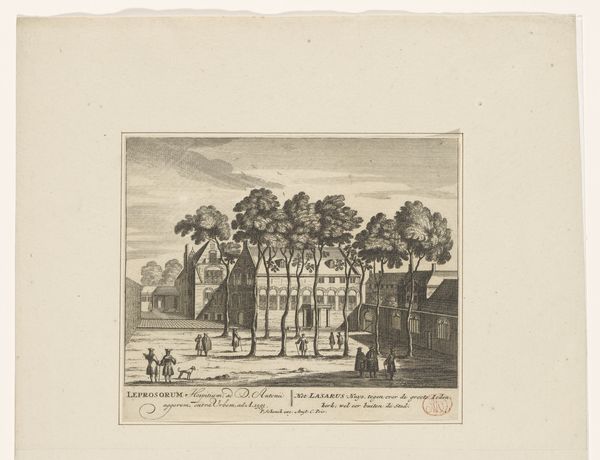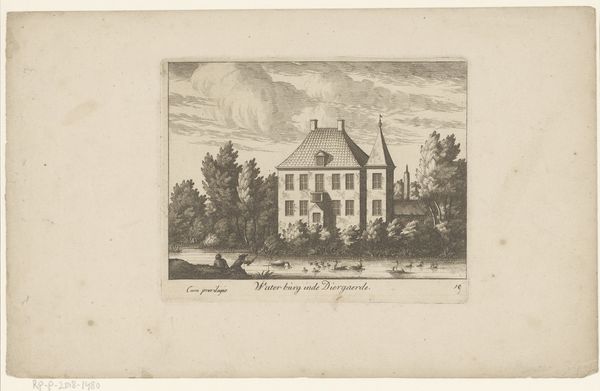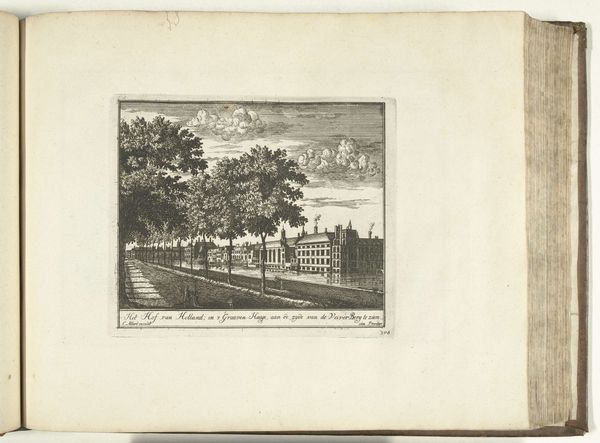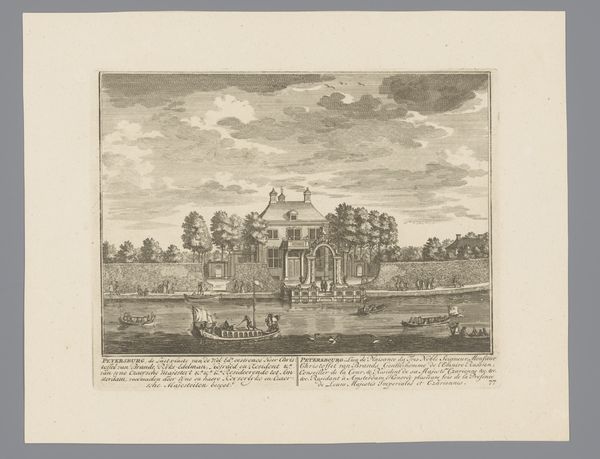
etching, paper
#
aged paper
#
homemade paper
#
paper non-digital material
#
pale palette
#
dutch-golden-age
#
etching
#
light coloured
#
sketch book
#
landscape
#
personal journal design
#
paper
#
personal sketchbook
#
line
#
cityscape
#
storyboard and sketchbook work
#
paper medium
#
realism
Dimensions: height 165 mm, width 192 mm
Copyright: Rijks Museum: Open Domain
Editor: This etching, titled "Gezicht op Hofstede Oud-Rust" from 1730 by Abraham Rademaker, presents a serene, almost understated view of a Dutch estate. The fine lines create a delicate feel. What catches your eye when you look at it? Curator: Well, as a materialist, my interest immediately gravitates towards the tangible aspects of its creation and the socio-economic context they represent. The etching itself, printed on paper, signals a moment of technological and social change. Paper wasn't always so accessible; who had access to these images, and how did their consumption reflect class dynamics? Editor: That's interesting. I hadn't really thought about who the print was *for*. I suppose someone must have been buying them. Curator: Exactly! Etchings like these weren't just aesthetic objects. They were commodities, reliant on the paper-making industry, the etcher's skill, and a market that valued images of country estates. Also, look at the landscape – the carefully manicured grounds. What labor went into creating this idealized vision of nature? Editor: So you're saying the image reflects the systems that made it possible? The material production and the social power are embedded within it. Curator: Precisely! Rademaker is not just showing us a pretty house; he’s also showing us the fruits of a specific kind of economic organization, made possible by the growth of the Dutch East India Company. Look closely – what implications do you think the director of the Dutch East India Company has for a quiet image such as this one? Editor: It feels like a shift in perspective for me, connecting art more directly to the economics of its time. I won't look at landscape prints the same way. Curator: That's exactly my hope. Appreciating the artistry also means understanding the materials, the labor, and the power dynamics woven into its creation.
Comments
No comments
Be the first to comment and join the conversation on the ultimate creative platform.
